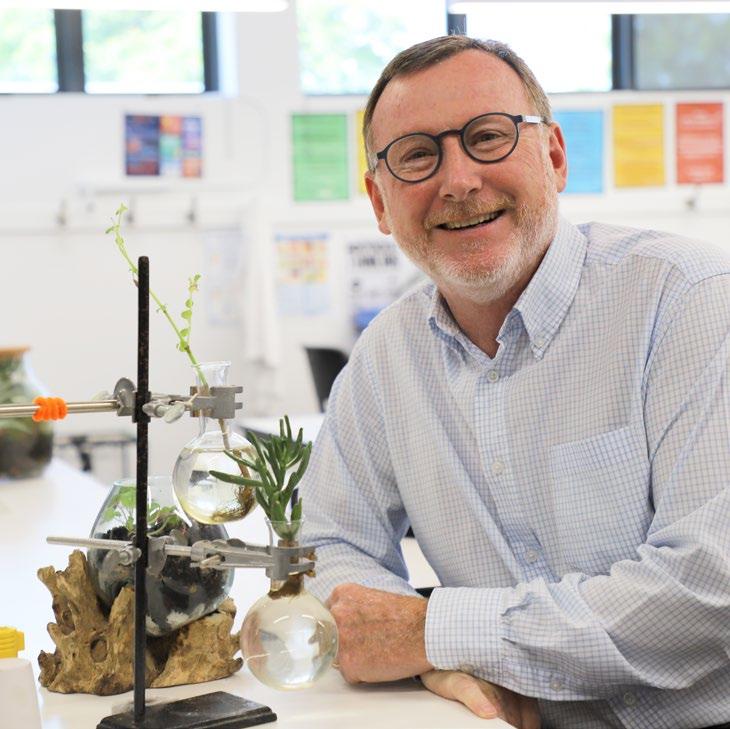
4 minute read
Mr Robert Marshall Invention from Motivation
Promote Healthy Risk Taking
It is important for young children to experience a healthy level of risk. They need to experience what it feels like to step outside their comfort zone. This might include trying an activity or skill they have not previously tried, interacting with new people, or trying out new play equipment at the playground.
Promote Optimism
Optimism and resiliency go hand in hand. Optimism can be nurtured in young children. Your conversations and questions can help support the child to see the positives in situations rather than becoming fixated on the negative.
Encourage Problem Solving Skills
If your child talks to you about an issue that has occurred during their day, rather than giving them solutions, ask them what they could do or who they could talk to about this problem if they encounter the same thing again. Through encouragement you are providing your child strategies and a plan for how to handle similar situations in the future.
Role Model Resilience
Role model how you respond to challenges. When your child sees you adapt because something does not go to plan, or let frustration go, or display a positive attitude in a challenging situation, they learn they can do the same. These are some of the strategies our educators utilise in our Early Learning programs at St Catherine’s to support the development of resilience in the children. By working together, families and educators can best support resilience building in the children and, ensure they are well-prepared for any challenges they may face in their everyday lives.
Ms Sarah Bethune
Head of ELC
Name: Mr Robert Marshall Title: Deputy Principal, Director of Teaching and Learning Date: 6 August 2021 Strategic Intent: Academic Achievement

INVENTION FROM MOTIVATION
Who does the vacuuming in your household? In my house it is me.
I love doing this domestic task although, perhaps many would consider it a chore. I used to regard vacuuming with a level of dread but, then we bought a Dyson! This little cordless and lightweight marvel transformed a once thankless task into a joyful one (for me). I enjoy vacuuming so much that my wife thinks I am somewhat obsessed by it. Maybe I am a bit weird, but I genuinely love using this beautifully designed piece of modern engineering. It is just plain fun to use. Sir James Dyson, the creator of the Dyson vacuum cleaner and a host of other household products, started from humble beginnings. Now, his company is a multi-billion-dollar global behemoth manufacturing 30 million products per year. Oddly enough, Dyson is not a qualified engineer. He trained as a designer at the Royal Academy of Arts and in an interview with The Australian last week he says, “I’m an ordinary person. I didn’t even do science at school and yet here I am developing new technology.” He goes on to say, “I don’t want young people to be put off by what their education has been, or what people have told them they are, because actually, they can do whatever they want to do, provided they are motivated.” Dyson has just released the book, Invention: A Life, in which he encourages young people to take risks, be resilient, pick themselves up off the floor when things go wrong and to possess the courage to commit and jump in when things go right. An interesting element of the memoir is where Dyson explains the continuing ‘snobbishness’ he encounters about his non engineering and manufacturing background. Dyson in effect, highlights a famous analogy written in an essay by C.P Snow in 1959, The Two Cultures, where Snow argues that the intellectual life of western society was divided by science and humanities. Effectively Snow establishes there are two cultures of thought which created a major handicap in solving the world’s great issues. Snow explains the division in a most elegant way: “A good many times I have been present at gatherings of people who, by the standards of the traditional culture, are thought highly educated and who have with considerable gusto been expressing their incredulity at the illiteracy of scientists. Once or twice, I have been provoked and have asked those present how many of them could describe the Second Law of Thermodynamics. The response was cold: it was also negative. Yet I was asking something which is the scientific equivalent of: Have you read a work of Shakespeare’s. I now believe that if I had asked an even simpler question – such as, what do you mean by mass, or acceleration which is the scientific equivalent of saying, can you read? – not more than one in ten of the highly educated would have felt that I was speaking the same language. So, the great edifice of modern physics goes up, and the majority of the cleverest people in the western world have about as much insight into it as their Neolithic ancestors would have had.” Snow’s influential essay, even though it was written more than 60 years ago, still resonates. Lawrence Kraus writing in the Scientific American laments the cultural divide “that separates two great areas of human intellectual activity, science and the arts still exists.” Kraus writes, “Snow argued that practitioners in both areas should build bridges, to further the progress of human knowledge and to benefit society.”










